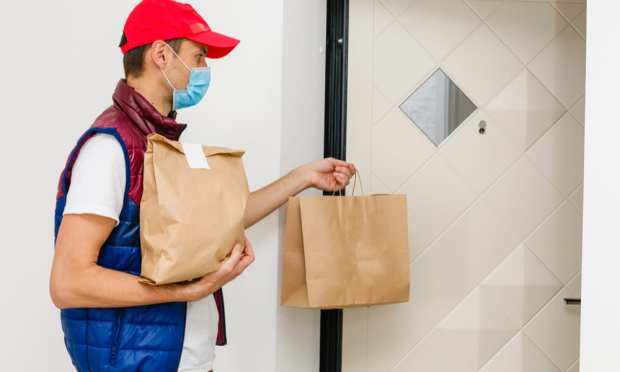The Rapid-Onset Delivery Ecosystem Evolution

While the eventual goal for perhaps all participants in the pre-COVID-19 commerce ecosystem was to center their operations around a digital-first mentality, priorities have shifted some in the last several weeks. A world that was aiming to get to digital-first has found itself launched – practically overnight – well past that target and into the world of digital-only.
According to data PYMNTS began gathering in early March, just a little over a month ago, 82 percent of Americans were eating in restaurants, 78 percent were shopping in retail stores and 60 percent were doing such crowd-oriented activities as going to the movies, attending sporting events and going to concerts. As of the first week of April, all of that was officially shut down, largely due to state and local stay-at-home orders that mandated the temporary suspension of business as usual.
And economic activity has slowed tremendously during this time: According to our most recent figures, 87 percent of consumers report shopping less for groceries, 86 percent of consumers report traveling less for leisure and a whopping 93 percent report eating at restaurants less frequently.
But the remaining commerce has undergone a remarkable digital conversion, and has managed to bring new converts into the fold despite the overall drop in transactions. The percentage of consumers buying groceries online has tripled, from 3 percent on March 6 to 9 percent on March 28. The percentage of people who interact with restaurants digitally also tripled, from 6 percent to 20 percent.
And it is into that very unusual push-and-pull – where there is simultaneously wider demand for their services, but less usage overall – that the various delivery players and platforms like Grubhub, DoorDash, Uber Eats and Postmates currently find themselves entering. Navigating an unprecedented situation, according to a Reuters report, has thus far been something of a mixed bag for a relatively new ecosystem.
At this point, most of the major names in food delivery in the U.S. and around the world are working around the clock to hold onto both sides of their platform – the restaurants that prepare the food and the consumers who eat it – while the economy gets to the other side of the COVID-19 trench.
On the restaurant side, that has seen firms like Uber Eats, Grubhub and Delivery Hero doing things like cutting commissions or delivery fees and offering loan products with flexible repayment terms to help improve their cash flow through the closure crisis.
By the numbers, it seems the strategies have had an effect. Grubhub reports signing on more than 20,000 new restaurants in March alone; in February, by comparison, it signed up 5,000. Deliveroo in the U.K. also reported a record-breaking month, with 3,000 new restaurants coming on board last month, according to a spokesperson interviewed by Reuters.
But the consumer side of the platform is shaping up to be more difficult, as shoppers have rather drastically curtailed their spending overall, particularly in dining out, in the last several weeks. And that difficulty may not start to lift until long after the official period of social quarantine is over, as consumers recover from the economic shock of COVID-19. With so many brushing up on their home-cooking skills of late, analysts at Deutsche Bank observed, restaurants and delivery startups will be looking at dented takeaway orders and commission fees for most of 2020 – and severely damaged growth in the first half.
“While the COVID-19 outbreak could intuitively be seen as beneficial to online food delivery players, with millions of people under lockdown, we conclude that this is not the case,” they stated in a research note last week.
And that possibly persistent weakness in the restaurant delivery category has moved firms like Uber Eats, Delivery Hero and DoorDash to expand their service lineups. Uber Eats has rolled out grocery delivery worldwide in the last few weeks, as well as delivery of convenience store items. Delivery Hero has made a similar grocery play, while DoorDash has partnered with 7-Eleven, Wawa, Casey’s General Store, Circle K and others to debut a new program to deliver household items like paper towels, OTC medication, cleaning supplies or any miscellaneous item found at over 1,800 store locations.
That service was planned before the worldwide pandemic, DoorDash noted, but it was pushed out faster in response to the crisis.
As for what the future holds for the delivery segment, more seems to be unknown than known at this point. Grubhub, for example, told Reuters that early signs show demand for takeout and delivery will recover in regions as the crisis levels off – though that remains very uncertain at this point.
“New York is not doing well because residents have fled, restaurants are closing and people are scared,” Grubhub CEO Matt Maloney said in an interview. “In Seattle, people feel like the worst is over; they’re feeling a little bit more confident. Everyone else is a mixed bag in between those two.”
And that mixed bag is likely to be in a state of flux for the foreseeable future.
